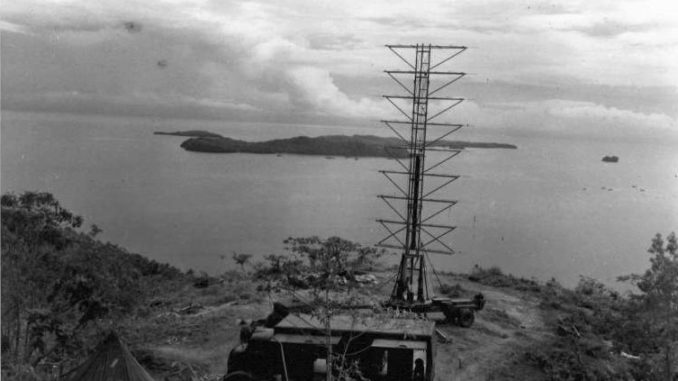
Following the May 1937 tests of the SCR-268 searchlight-control radar, the US Army expressed an interest in obtaining an early warning air search radar with much longer range. A US Army Signal Corps Laboratories team, led by Dr Harold Zahl, began the initial research and design work in parallel to that for the SCR-268, eventually producing a device which would prove to be one of the most important American radars of the war. Two related sets were eventually created, the SCR-270 and the SCR-271.
The design deliberately sacrificed directional accuracy in favour of range over the 268, increasing the wavelength to 3-metres, which necessarily required a much larger “mattress” style aerial. The device could consistently track individual aircraft out to 125km, and formations out to 240km. As was common with most air-search radars of the time, the 270 could not provide altitude information for any contacts, but an experienced crew operating a well-calibrated set could provide a reasonable estimate based on the ‘fade zones’ caused by ground reflections of the radar pulses. To allow simultaneous transmission and receiving by the same aerial and dispense with a dedicated receiving antenna, a component called a duplexer was developed. Despite this innovation, the radar and its associated equipment were large and heavy, with the complete set approaching 50 tons. Westinghouse were selected as the main contractor to produce the set in volume.
Two different versions were created – the SCR-270 was a mobile unit, with all equipment carried on a total of 4 trucks – an operating truck where the radar operators worked, a power truck, a prime mover/trailer carrying the main antenna, and a stake truck carrying the rest of the antenna assembly. The related SCR-271 included all of the same equipment but was fixed in position, construction of which could be completed in our two weeks.
No less than 112 SCR-270/271s had been manufactured by the start of the Pacific War. The first set to be deployed was a fixed SCR-271 which was installed at Fort Sherman, on the Atlantic side of the Panama Canal, in June 1940 which was soon followed by another set for the other end of the canal. Six 270s were shipped to Hawaii during 1941, most of which had been set up on Oahu by early December, at various points around the perimeter of the island. The set at Opana Point famously detected the incoming Japanese attack on the 7th of December 1941 a full 45 minutes before bombs began to fall, but the information was not acted upon and the attack achieved complete surprise.
A further four SCR-270s and nine SCR-271s had been shipped to the Philippines for deployment around those islands, along with the personnel of an Army Signal Corps company to operate the equipment. Only one of these was operational by the time the Pacific War started, at Iba airfield on the west coast of Luzon, but this was destroyed by the Japanese on the first day of the war. The others were never fully deployed, and at least one set was captured intact by the Japanese during the occupation. This served as the basis for several Japanese radars.
With the lack of radar at Wake Island graphically demonstrating how difficult the problem of early warning was without such equipment, the US Army and Marines rapidly deployed SCR-268 and -270 sets to outlying islands as part of the general deployment of reinforcements. Midway received three 268s and a 270, which all played a role during the defence of that island in June 1942. Five more were shipped to Alaska, followed by several more as the campaign in the Aleutians progressed.
An SCR-270 was provided as part of the equipment to be landed with the Marines on Guadalcanal in August 1942, but the ship carrying it pulled out after the Battle of Savo Island threatened the beachhead. It was eventually landed on Guadalcanal on 20th September 1942 and proved invaluable in detecting incoming Japanese raids. This set was soon joined by two more 270s and two 268s for the 90mm batteries protecting Henderson Field. The Marine operators quickly overcame the 270’s lack of height-finding capability by pairing the set with a 268 which did have that ability, information which could be radioed to Marine fighter pilots in the air.
Several variants of the SCR-270 were produced, although they were little used during World War II. The SCR-289 variant introduced a height-finding capability which the original version lacked, and further improvements led to the upgraded model SCR-532. The SCR-539 was a Plan Position Indicator (PPI) display unit for the 270/271, providing the famous circle-sweep screen for the operators in place of the standard A-scope. SCR-270s served throughout the war and beyond as the standard air search radar set for the Army and Marines. Over 500 examples were produced by Westinghouse through to the end of the war. More advanced microwave sets like the AN/CPS-1 began to arrive towards the end of the conflict but they never replaced the 270s in active service. They even served on into the post-war world, with half a dozen 270s being used during the initial stages of the Korean War until more advanced radars could be deployed.

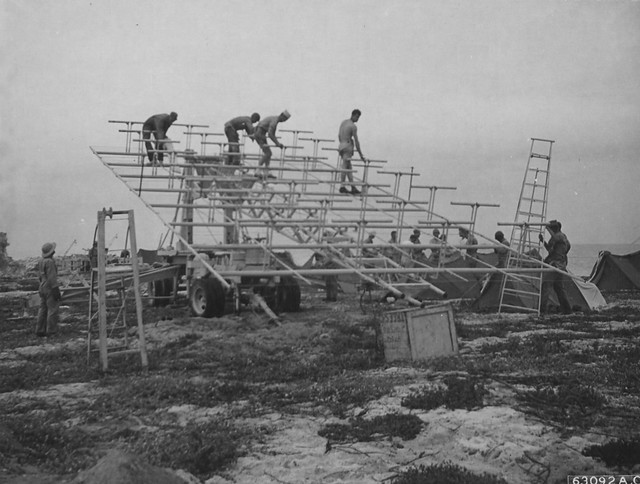
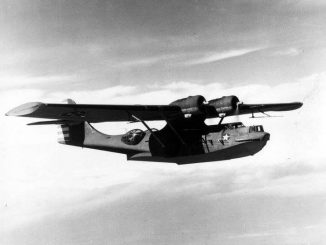
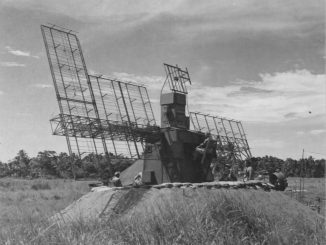
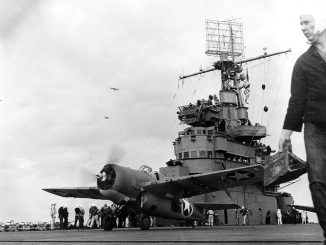
Leave a Reply